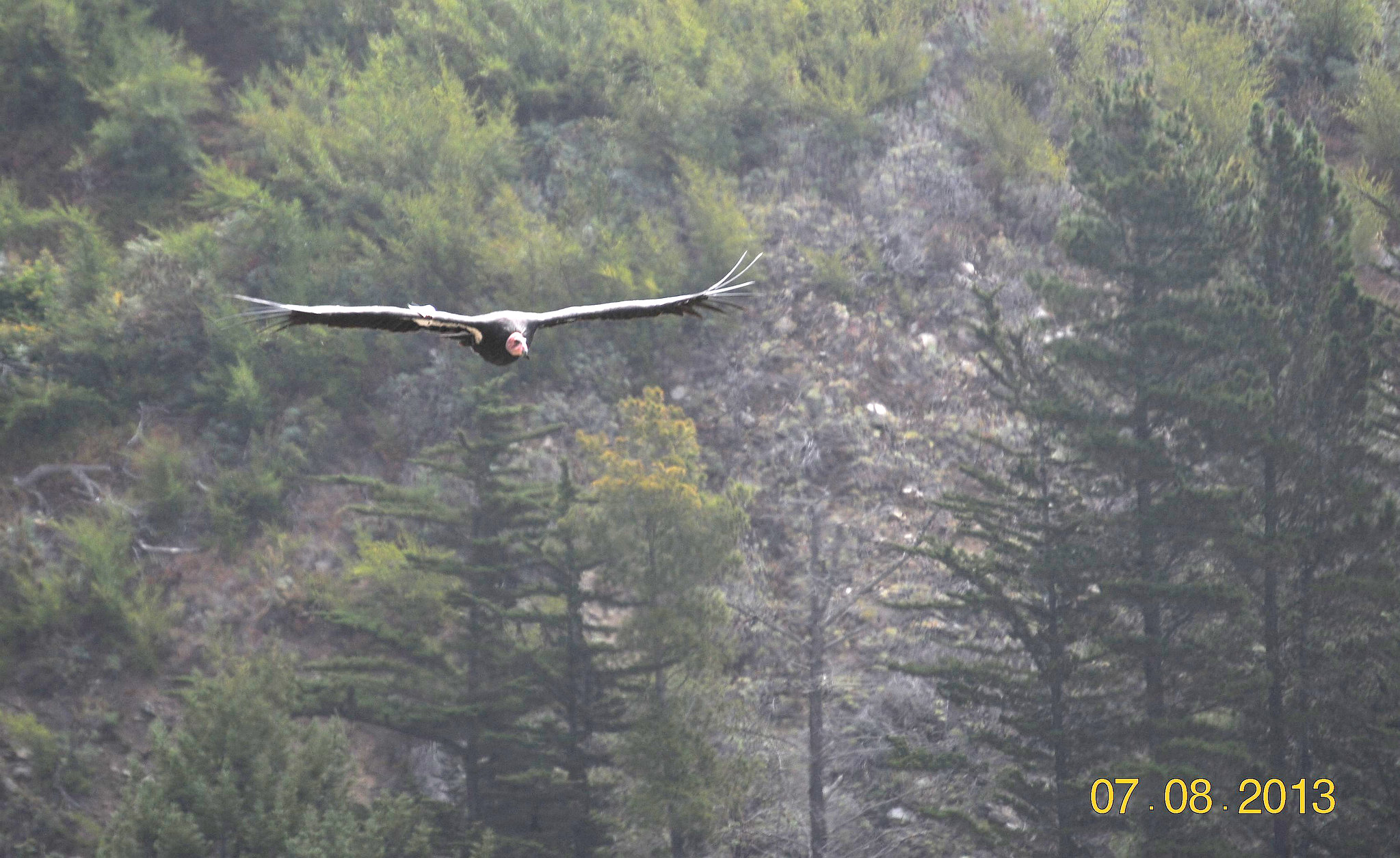California condor (Gymnogyps californianus) ) is the only remaining member of its genus in the family Cathartidae, and is one of the rarest bird species in the world. California condors are obligate scavengers that primarily feed on large mammalian carcasses (e.g., deer (family Cervidae), elk (Cervus canadensis ssp. nannodes), feral pigs (Sus scrofa), livestock (domestic ungulates), horses (Equus ferus caballus), pinnipeds (family Otariidae); however, medium- to small-sized carrion (e.g., rabbit (Family Leporidae) and squirrel (family Scuridae)) also are utilized.
Currently, California condors predominately forage in open terrain of foothill grassland and oak savanna habitats, and at coastal sites in central California (birds released from Big Sur and Pinnacles National Park), but have also been observed feeding in more wooded areas, though this is less common (J. Grantham 2010 pers. comm.).
California condor nesting habitat was found in steep remote mountainous or canyon terrain on rock or cliff escarpments. These areas tended to be separate from foraging areas, which were typically open grasslands and oak savannas (Meretsky et al. 1992). Roosts, found in or near both foraging and nesting habitat areas consisted of large trees or snags with open lateral branches or cliff faces and rock spires with available perches. California condors have also been known to nest in the cavities of old-growth giant sequoias in the southern Sierra Nevada mountain range or coast redwoods along the central coast of California (Koford 1953). In all cases, condors do not build nests, but move sand, twigs, rock, and other materials around in nest sites to create the appropriately shaped substrate required for egg laying (Snyder and Snyder 2000). Nesting habitat is used year round by breeding pairs as they spend an 8-month period tending to their egg or chick in the nest (Snyder, 1983). Reference
Federal Status
ENDANGERED
- Recovery Plan – 1996
- 5-Year Review – 2013
- Final Critical Habitat Designation – 1977
- Establishment of Nonessential Experimental Population in Northern Arizona – 1996
California Status
ENDANGERED
